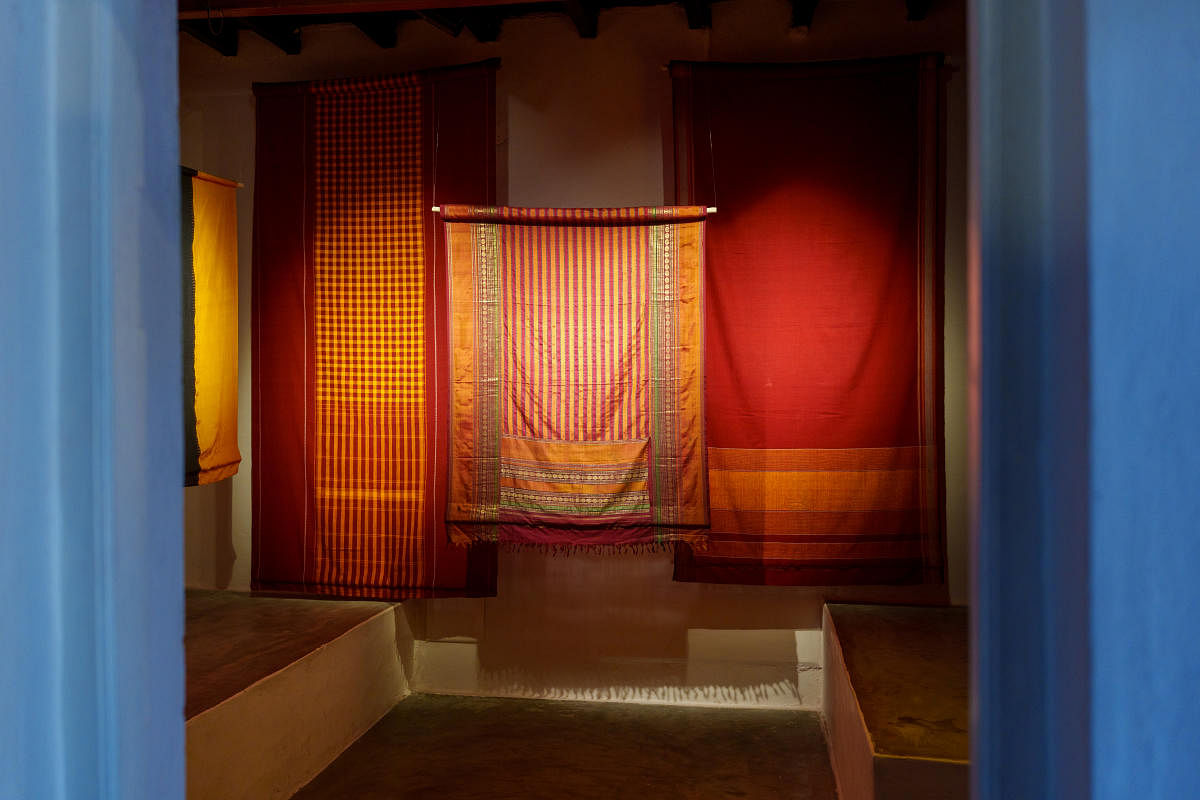
Nestled amongst lush green banana plantations and emerald green paddy fields, on the northern bank of the mighty Tungabhadra river, near Hampi, is the village of Anegundi, the mythical Kishkinda kingdom, home of the monkey kings.
Installed in heritage homes, in the bylanes of Anegundi village, was a unique textile exhibition — Red Lilies, Water Birds — The Saree in Nine Stories. Presented by the Registry of Sarees and The Kishkinda Trust, the exhibition, curated by Mayank Mansingh Kaul and designed by Reha Sodhi, featured a selection of 108 sarees and draped garments, narrated through nine themes that represent a period ranging from the late 19th to the early 20th century.
“The exhibition aims to use textiles from our collection to provoke independent research and interactions with artisans who have a refined mastery of their own practices and allows for an inclusive opportunity to shift paradigms in how we understand the culture, the environment, identity and community in India,” said Ahalya Matthan, Founder of the Registry of Sarees.
Talking about the uniqueness of this exhibition, curator Mayank Mansingh Kaul said: “This presentation in Anegundi emerges from a need felt for curatorial efforts in the field of Indian textiles to move outside metropolitan cities and their usual staging in formal institutional spaces like galleries and museums. It asks of the relevance of material archives to inspire creative makers as well as viewers with general interests, in sites of historical significance where artistic thrusts from a distant past inform the cultural and economic life of today.”
Regarding the inspiration for the title of the exhibition, he replied: “For me, a saree always reminds me of a field. I happened to come across part of a translation of a medieval Tamil poem, ‘Muththolaiyram’.
It reads thus: ‘When the red lilies bloom on the waterlogged fields, the birds panic that the water is on fire. They fly helter-skelter trying to guard their nestlings under their wings.” The preview was inaugurated by a processional walk, from the Uramma Cultural Residency and Intach Office to the ancient Ranganatha Temple and then on to the guided walkthroughs of the exhibition in English, by curator Kaul and in Kannada by scholar Preeth Khona. Later, Heritage Walks by Shama Pawar, founder of the Kishkinda Trust, took us to craft clusters, with workshops making banana fibre products, as also to historical sites.